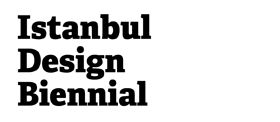Here is an other intervention by Boğaçhan Dündaralp for Haliç Center Project, curated by Maurizio Bortolotti within Adhocracy Exhibition.

Two questions examining its position both in the axis of space-context and ‘in today’s urban structure’ on a more global scale.
How to analyze the “Haliç Center Project” in the axis of space-context from the approaches put forth by Yona Friedman?
When we look at the architectural approach which Yona Friedman has maintained since the 1960s, we see that he has focused on different architectural media such as books, guides and organizations, researching ‘technical’ facilities, infrastructures, productions, communication models, which displays the use of different tools triggering people’s way of self-building.
Yona Friedman’s Haliç Center Project is an installment of the city-bridge idea developed in 1963 in parallel with the utopian architectural projects of the 60′s known as “Age of megastructures;” in which the bridge was used as an infrastructure.
Friedman’s idea of city-bridge (spatial city), mobile (flexible) architectural researches and studies contain urban experiences after the War. Given the conditions of war or disastrous environments, survival, deprivation, destitution and poverty, these are very important and up-to-date studies in the sense that they seek for the ways in which self-organization and self-build methods are implemented, decision-making mechanisms leave their place to communication models and the basic principles of participatory design are investigated.
The 1960s was the period when Turkey started implementing a planned economy, the scarcity of capital was the most important factor and the already scarce capital was allocated to the industry. During this period of time when the capital allocated to urbanization and housing was minimized due to the cost of rapid industrialization, ‘Gecekondu’ (shanty town) emerged as, with the words of İlhan Tekeli, “an innovative solution for the economy although it was seen as a problem by the bureaucracy, architects and planners who internalized the modernist legitimacy.” It is a great loss for this geography that the discussions and similarities between Friedman’s approaches and the emergence of “Gecekondu” (shanty towns) during this period were neglected. The Van earthquake in 2011 demonstrates that the traumas and housing problems after the Kocaeli earthquake in 1999 failed to be examined in the bureaucracy-planner-architect axis and a platform was not created to transmit those experiences to today. Likewise the modernist planning and architectural trends in this geography at that time whose energy did not produce alternative approaches, Istanbul’s urban transformation movements supported by the neo-liberal policies and power dynamics are different from their counterparts in the world. They destroy the Gecekondu (shanty towns) and violate the “right to housing” policies and therefore, do not produce alternative approaches.
Despite its posteriority, Yona Friedman was invited to Istanbul Design Biennial to presented a project open to communication, The Haliç Center Project. What exactly does this project depict in the context of the explanations above and in the axis of place-context?
Yona Friedman rejecting the utopian labels attributed to him, states that he always strove to develop and realize feasible projects.
[ Read more ]























